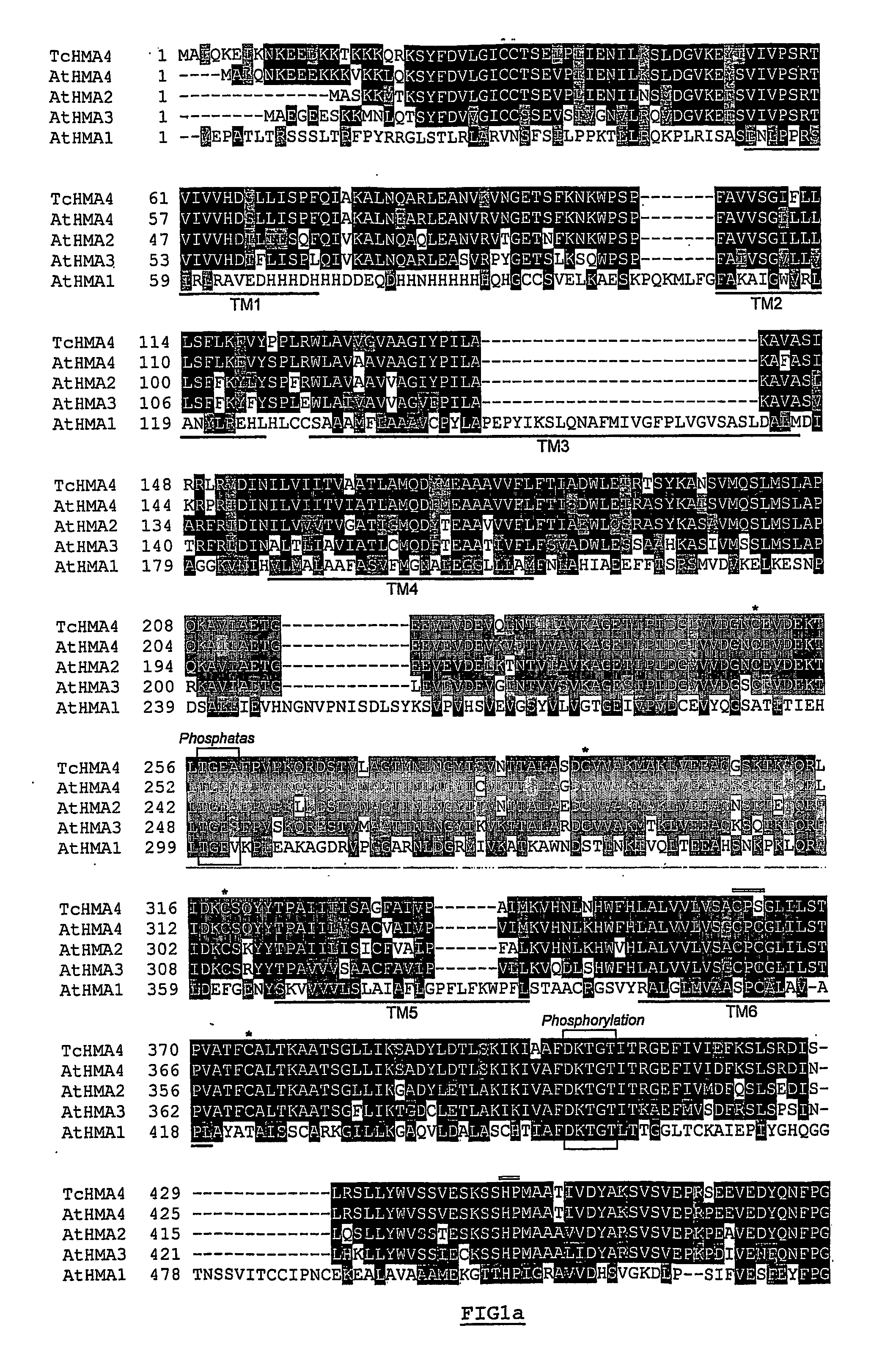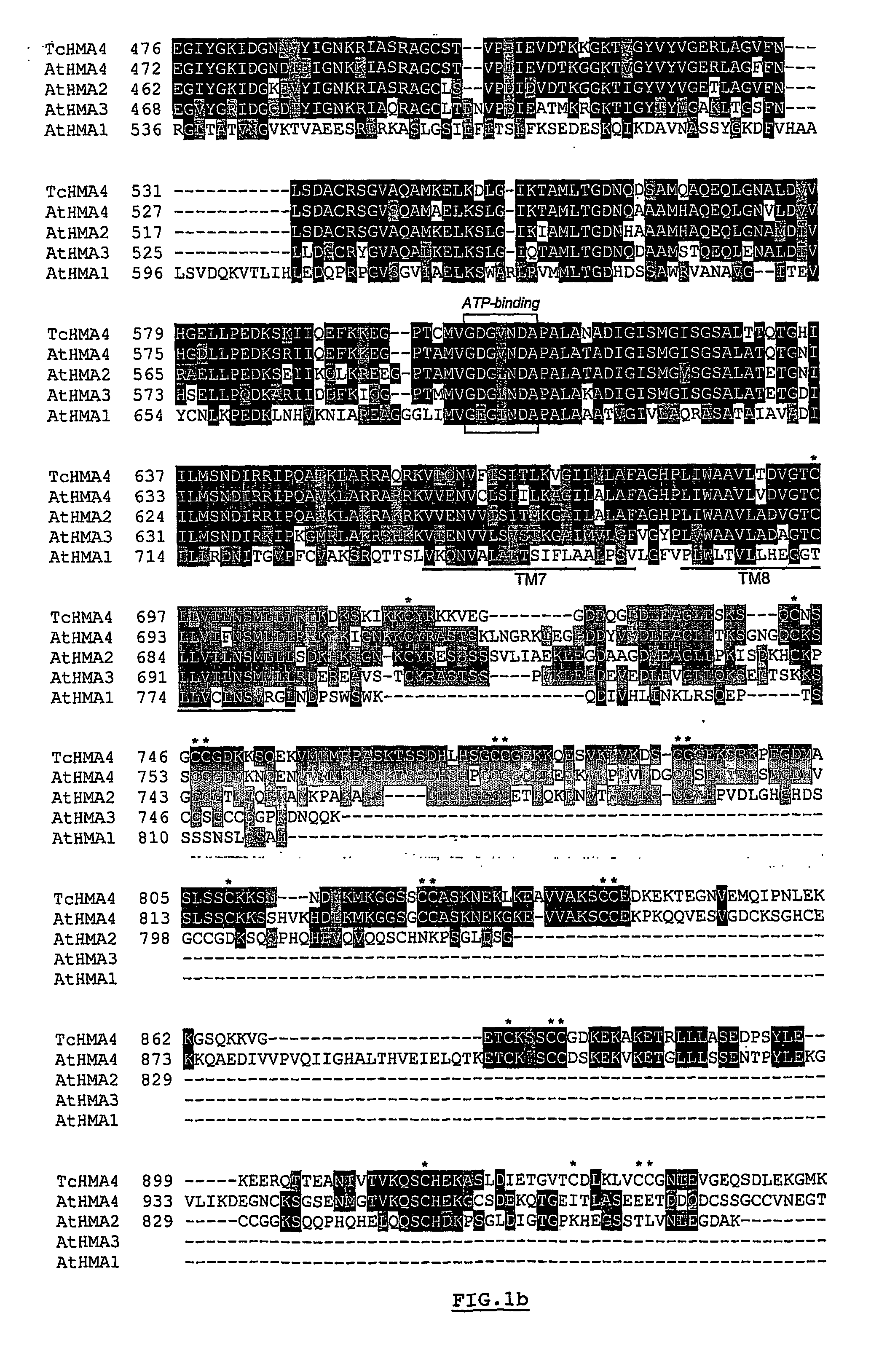Agents for phytoremediation
- Summary
- Abstract
- Description
- Claims
- Application Information
AI Technical Summary
Benefits of technology
Problems solved by technology
Method used
Image
Examples
Embodiment Construction
Material and methods
[0047] A cDNA bank from leaves of one of the best Cd hyperaccumulator population of Thlaspi caerulescens (Roosens et al. Plant cell and Envir. Vol 26, p 1657-1672) was integrated in the pYX212 vector. The pYX212 vector is a yeast / E. coli shuttle vector for expression in S. cerevisiae sold by R&D ingenius company (Madison, USA). Insert was under the activity of the triose phosphate isomerase promoter, which is one of the strongest constitutive promoter in yeast. pYX212 is a 2μ plasmid, replicates autonomously in yeast, being maintained at 25-100 copies per cell. The plant cDNA were cloned between the EcoRI and the XhoI sites. The selection marker was URA3 in yeast.
Yeast Strain Used for Transformation
[0048] The Saccharomyces cerevisiae wild-type strain used for transformation experiments was BY4741 ATCC Number 201388 (“Yeast Genetic Stock Collection” in the ATCC Global Bioresource Center).
E. coli Strain Used for Transformation
The E. coli st...
PUM
| Property | Measurement | Unit |
|---|---|---|
| Fraction | aaaaa | aaaaa |
| Fraction | aaaaa | aaaaa |
| Fraction | aaaaa | aaaaa |
Abstract
Description
Claims
Application Information
 Login to View More
Login to View More - R&D
- Intellectual Property
- Life Sciences
- Materials
- Tech Scout
- Unparalleled Data Quality
- Higher Quality Content
- 60% Fewer Hallucinations
Browse by: Latest US Patents, China's latest patents, Technical Efficacy Thesaurus, Application Domain, Technology Topic, Popular Technical Reports.
© 2025 PatSnap. All rights reserved.Legal|Privacy policy|Modern Slavery Act Transparency Statement|Sitemap|About US| Contact US: help@patsnap.com



